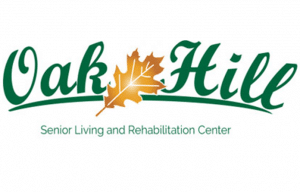COVID balancing act for health department, schools
As state orders stress the importance of in-person education while also imposing many COVID restrictions, schools and local health departments are navigating how to limit the spread of the disease in schools.
With some schools seeing large numbers of COVID-positive individuals, they are making the decision to go remote for a limited period of time.
Just last week, Central Elementary School in O’Fallon closed its doors after almost 40 students tested positive for COVID, FOX2 News reported.
Monroe County Health Department Administrator John Wagner said while local schools have not seen large volumes of cases such as this, he and superintendents have discussed the possibility of transitioning particular classrooms to remote learning.
A Columbia kindergarten classroom underwent a brief period of remote learning earlier this month after it saw an uptick in cases, superintendent Chris Grode said.
“If there’s 20 kids and you’ve got four or five kids out, you’re looking at a quarter of the class. So, at that point, even if they’re not close to each other, something’s going on in that class. So, we (said), ‘Let’s take a step back and see if we can get it disinfected and then move on,’” Grode said. “They were closed for two days, so what we did was we made that decision on the Wednesday before Veterans Day, and so the kids went home early Wednesday, they were home for Veterans Day, then we kept them home on Friday and they were back to school on Monday.”
This decision was made after consulting with the Monroe County Health Department.
Grode, Waterloo School Superintendent Brian Charron and Wagner said they expect any decision to transition a classroom, grade level or school due to a COVID increase to be a decision between the districts and health department.
Wagner said the health department, when asked, gives the schools guidance on how to handle increases in cases. Yet, for the most part, schools reserve the right to take action as they deem necessary. Per COVID executive orders and guidelines, a school must have permission from the local health department in order to transition to school-wide remote learning, Wagner said.
“We advise the schools on cases when they have questions,” Wagner said. “We help with contact tracing if we need it, we help them figure out where these cases are coming from and then we advise them on what we think should be done. Now, they don’t necessarily have to follow our advice.”
For example, in the recent case of Columbia having one of its kindergarten classes go remote for a short time, the health department suggested closing the class for 10 days, but upon further examination, Columbia and the health department determined that such a long period was not necessary. The district decided to essentially extend the students’ weekend, having them do only one day of remote learning, and, as Grode said, it worked.
In drastic situations, the health department may make an executive decision to close portions, if not an entire, school.
Wagner said he does not foresee this ever happening in Monroe County, though.
“If we have some large outbreak and the school says, ‘No, we’re just not going to listen to you’ and the health department deems that we do have to have this happen, we have the authority to close the school,” Wagner said. “That’s never happened. All the schools have worked with us.”
Just as Wagner does not believe he will be in a situation where he will close a school against the district’s wishes, Charron said he does not believe Waterloo would ever take action without health department approval.
“I can’t imagine us making that decision without the health department wanting us to,” Charron said.
As Grode and Wagner said, there are no exact thresholds, such as a percentage of the COVID-positive student body, that warrant closure outlined by the health department, IDPH, ISBE or the governor.
“There’s no clear-cut black and white rule that says, ‘When we get to this point, we are going to do this,’” Grode said. “We are watching it and trying to do what we think is best.”
A primary consideration when deciding to transition a portion of the student body to remote learning is if there is an unidentified, usually asymptomatic, individual spreading the disease.
“It’s mainly been the desire of the health department to find the source of the spread, and then if they feel like they could stop the chain, then they don’t feel the need to close a classroom or a grade level,” Charron said. “But, if there are multiple kids from a classroom or grade level that are contracting COVID and they can’t trace back where the student may have gotten it from, then they would be more likely to push for something to be closed.”
Because of contact tracing, monitoring which students have symptoms and other methods, moving entire classrooms or grade levels to remote learning is often avoided.
“Most of the time we can figure out, ‘OK, this person had it so it probably spread from here to here’ and that doesn’t involve us closing a classroom or school because we can take those students (that are spreading it), put them on quarantine and the school continues to operate,” Wagner said. “It’s only an issue when we don’t know where it’s coming from and we don’t think we can contain it anymore and the only means we have to control it, to contain it, is to let everybody go home for a period of time.”
As seen with other districts pre-COVID during flu season, sometimes the number of well students is too small to hold in-person class. To Wagner’s knowledge, this has not been an issue in the county with non-COVID illness, and it has not been an issue with COVID.
“The schools may close a classroom or a grade just purely based on numbers, meaning there’s not enough kids (in school) to make it worthwhile to have class,” Wagner said.
Per state guidelines and mandates, individual students may be excluded from school as close contacts. This, a topic of much contention among the public, is often guided by the health department and districts working together.
“We work with the health department in gathering information to contact trace and determine if it’s obvious that someone has been within three feet for more than 15 minutes, and then we let the family know that we’ve determined (their student) to be a close contact and we’re giving that information to the health department,” Charron said.
It’s not always easy to determine this, though.
“If it’s marginal, then we contact the health department first and share what those circumstances are and ask the health department if they think that person qualifies as a close contact or not. In every case, the health department is the final authority in determining if someone is a close contact,” Charron said.
Close contacts may stay in school provided they meet the criteria of IDPH’s test-to-stay option, which Eagleview Elementary Principal April Becherer explained at a previous Columbia School Board meeting.
“Kids can test on days 1, 3, 5 and 7 and as long as they remain non-symptomatic, they do not (have) to miss a single day of school,” Becherer said.
Both Waterloo and Columbia schools are currently offering SHIELD testing so students can test-to-stay.






